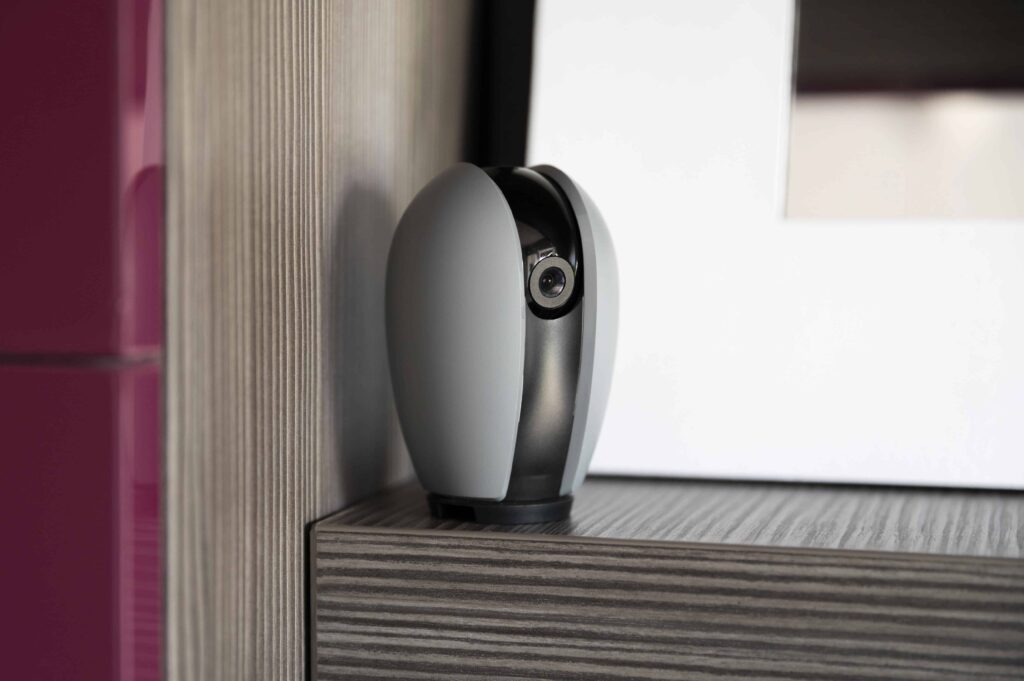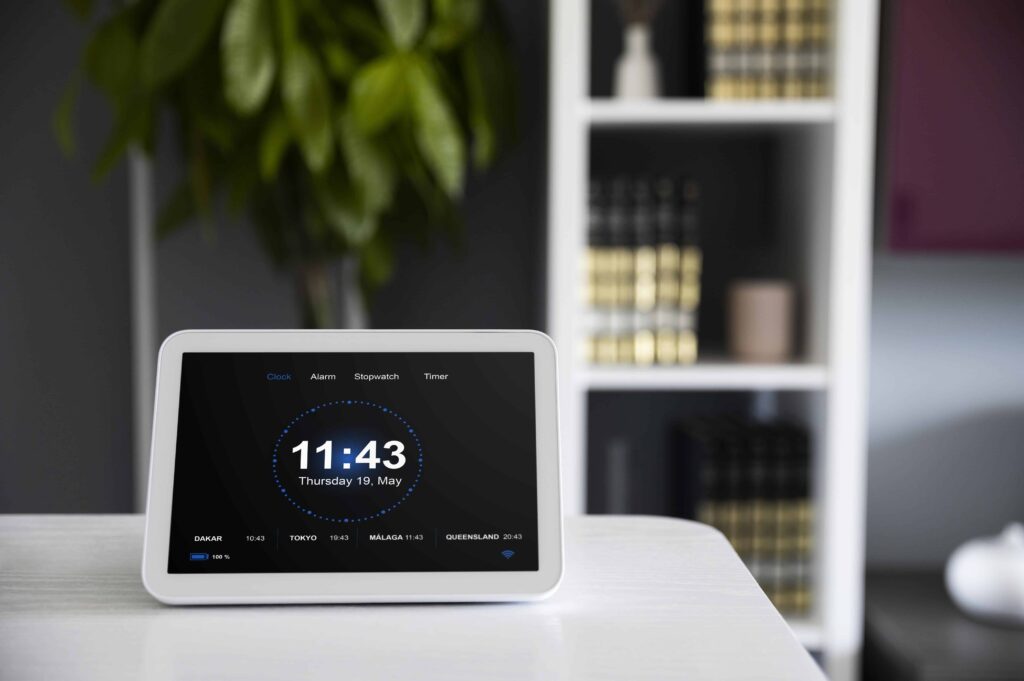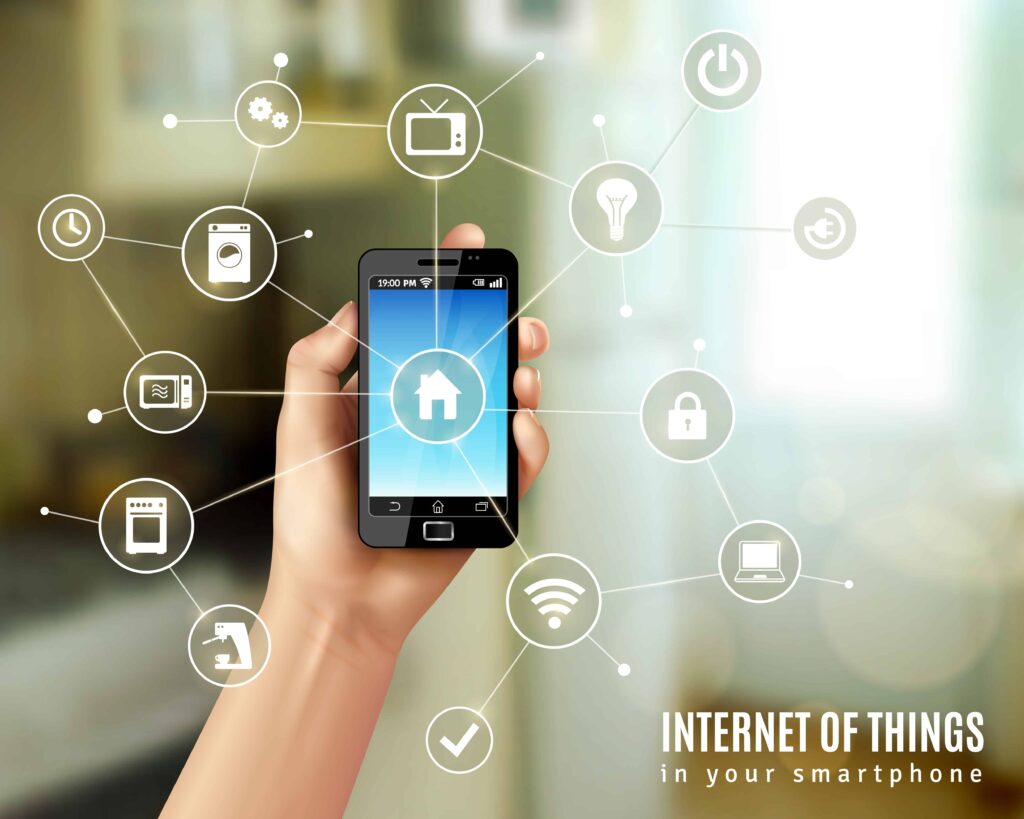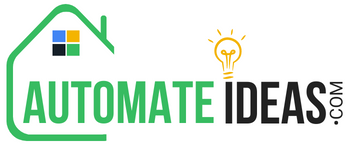When it comes to the safety and security of our homes, we all want peace of mind. That’s where the Nest Security System comes in. It’s an advanced technology that helps you keep your home secure in a simple and user-friendly way.
In this article, we’ll discuss everything about the Nest Security System and explore how it can improve our home security. Whether you’re a homeowner, a renter, or living in an apartment, the Nest Security System offers reliable protection against potential threats, all while seamlessly integrating into your smart home setup.
Throughout this post, we’ll take you on a journey to discover the impressive features of the Nest Security System. We’ll cover everything from how it detects intrusions to how you can access and control it remotely. You don’t need to be a tech expert to understand and appreciate the benefits this system brings to your home.
How Nest Security System works?
The Nest Security System is a smart home security system designed to keep your home safe and protected. It consists of different devices that work together to monitor your home and alert you to any potential threats.
The system includes a central device called the Nest Guard, which acts as the hub or brain of the security system. It connects wirelessly to other devices like the Nest Detect and Nest Tags. The Nest Detect is a small sensor that you can place on doors, windows, or walls. It detects motion and can also sense when a door or window opens or closes. The Nest Tags are keychain-like devices that you can use to arm or disarm the security system easily without needing a passcode.
When you’re away from home or when you want to secure your house, you can activate the Nest Security System using the Nest app on your smartphone or tablet. Once armed, the system starts monitoring your home for any activity. If the Nest Detect senses motion or if a door or window opens while the system is armed, it will send an alert to your phone.
You can then check the live video feed from any Nest cameras you may have installed around your home to see what’s happening. If it’s a false alarm, you can easily disarm the system using the Nest app or your Nest Tag. But if there’s a real threat or if you’re unsure, you can call for help or notify the authorities.
Main Components of google nest hub

The Nest Security System consists of several important components that work together to provide comprehensive home security. Let’s take a closer look at each one in simple and easy-to-understand language:
Nest Guard: This is the brain of the system and acts as a central hub for controlling and monitoring your security. It features a keypad that allows you to arm or disarm the system easily. Nest Guard also has a built-in siren that alerts you in case of an intrusion or other emergencies.
Nest Detects: These small, discreet sensors are placed on doors, windows, or walls to detect any movement or when they are opened or closed. They can even sense motion in a room. Nest Detects are intelligent and can differentiate between people and pets, reducing the chances of false alarms.
Nest Tags: With Nest Tags, you can easily arm or disarm your security system without needing to enter a code. These small devices can be attached to your keychain or carried in your pocket. Simply tap the Nest Guard with the Tag, and the system will know it’s you, allowing you quick and convenient access.
Nest App: The Nest Security System comes with a user-friendly mobile app that lets you control and monitor your security from anywhere. Using the app, you can arm or disarm the system, receive real-time alerts, and even view live video feeds if you have additional Nest cameras.
These components work seamlessly together to create a powerful security system for your home. The Nest Guard acts as the control center, while the Nest Detects keep an eye on doors, windows, and rooms for any activity. The Nest Tags provide a hassle-free way to arm or disarm the system, and the Nest app gives you full control and access to your security system right from your smartphone.
By combining these components, the Nest Security System offers a comprehensive and easy-to-use solution to keep your home secure. Whether you’re inside the house or away, you can have peace of mind knowing that your home is protected by a reliable and intelligent security system.
how the system detects and alerts for potential intrusions

The Nest Security System is designed to keep your home safe by detecting and alerting you to potential intrusions. It uses smart technology to monitor activity in and around your home. Here’s how it works:
Motion Detection: The system includes motion sensors that can detect movement in different areas of your home. When someone or something moves within the sensor’s range, it triggers an alert.
Door and Window Monitoring: The Nest Security System also keeps an eye on your doors and windows. It uses sensors placed on these entry points to detect if they are opened or closed. If a door or window is opened unexpectedly, the system will send you an alert.
Intrusion Detection: If the system detects motion or an open door/window when it’s supposed to be armed (activated), it interprets this as a potential intrusion. It immediately triggers an alarm to alert you and scare off intruders.
Remote Alerts: The Nest Security System is connected to your smartphone or other devices through a mobile app. When an intrusion is detected, it sends an alert to your phone, allowing you to take immediate action and notify the authorities if needed.
By using these different detection methods, the Nest Security System ensures that you are promptly notified of any suspicious activity in and around your home. The system’s quick alerts help you stay informed and take appropriate measures to keep your home and loved ones safe.
how the system uses motion sensors to monitor activity in the home
The Nest Security System utilizes motion sensors to keep a close eye on activity inside your home. These sensors are like watchful eyes that detect any movement or motion within their range. When you’re not around or when everyone is asleep at night, the motion sensors act as your trusted sentinels, constantly scanning their surroundings for any signs of activity.
Once the motion sensors detect movement, they send a signal to the system, which then triggers a response. This response can take different forms depending on your preferences and settings. For example, it can activate an alarm to alert you and scare away potential intruders. It can also send an alert to your smartphone, allowing you to remotely monitor what’s happening in your home in real time.
The beauty of the Nest Security System’s motion sensors lies in their ability to distinguish between different types of movement. They are designed to focus on human activity while ignoring the movement of pets or objects. This means you won’t be bombarded with false alarms every time your pet roams around the house or a curtain sways in the breeze.
The system’s motion sensors are strategically placed in key areas of your home, such as hallways, entryways, and common spaces, to provide comprehensive coverage. They have a wide field of view, ensuring that they capture any movement within their range.
By using motion sensors, the Nest Security System adds an extra layer of protection to your home. It allows you to keep tabs on any unexpected activity and take appropriate action if needed. Whether you’re at work, running errands, or fast asleep at night, you can have peace of mind knowing that the motion sensors are diligently monitoring your home, ready to notify you of any unusual movemen
How Google Nest monitor our entry points

In simple terms, the motion sensors of the Nest Security System act as vigilant guardians, always watching out for any activity and helping you maintain a secure and protected home environment.
Door and Window Sensors:
The Nest Security System comes with sensors that you can install on your doors and windows. These sensors are like little guardians that keep an eye on these entry points. It can detect when a door or window is opened or closed. So, if someone tries to enter your home without your knowledge, the system will immediately send you an alert.
Instant Notifications:
When an entry point is breached, such as when a door or window is opened unexpectedly, the Nest Security System is quick to notify you. It sends instant notifications to your smartphone or other devices, keeping you informed about any activity at your entry points.
Sensitive Motion Detection:
In addition to the door and window sensors, the Nest Security System uses smart motion detection technology. It can sense normal movements and suspicious activity. So, if someone tries to break in by bypassing the sensors and moving inside your home, the system will be alerted and notify you right away.
Activity Zones:
To enhance accuracy and reduce false alarms, you can set up specific activity zones within the camera’s view. For example, if you have a window facing a busy street, you can define the activity zone to focus on that area only. This way, you will receive alerts only when there is an activity within those zones, ensuring that you stay informed about the most relevant events.
Video Monitoring:
The Nest Security System includes cameras that offer video monitoring of your entry points. You can access live video feeds or review recorded footage to see exactly what is happening at your doors and windows. This feature provides valuable evidence in case of any incidents and allows you to visually verify who is accessing your home.
By utilizing these monitoring features, the Nest Security System provides you with comprehensive oversight and control over your entry points. You can have peace of mind knowing that your home is well-protected, and any unauthorized access attempts will be detected and brought to your attention promptly.
Remotely Control the Nest System Via Mobile App

One of the standout features of the Nest Security System is its ability to let you monitor and control your home security remotely using a simple mobile app. This means that no matter where you are – whether at work, running errands, or even on vacation – you can stay connected to your home and have peace of mind.
With the Nest mobile app installed on your smartphone or tablet, you can easily check the status of your security system, view live video feeds, and receive instant alerts right at your fingertips. Imagine being able to see what’s happening in and around your home in real time, even when you’re miles away.
The app provides you with full control over your Nest Security System. You can arm or disarm the system with just a tap, ensuring that your home is protected when you’re away and allowing you to disarm it for authorized visitors or family members as needed. It’s like having a virtual control panel in the palm of your hand.
Furthermore, the app allows you to customize your security preferences. You can set up personalized alerts for specific events, such as when a door or window is opened or when motion is detected. These instant notifications keep you informed of any unusual activities, enabling you to take appropriate action promptly.
Not only does the mobile app provide convenience, but it also empowers you to take control of your home security no matter where you are. Whether you want to check on your kids arriving home from school, monitor package deliveries, or simply ensure that everything is secure, the Nest mobile app puts the power of control and peace of mind in your hands.
So, say goodbye to worrying about your home’s security when you’re not there. With the Nest mobile app, you can easily monitor and manage your Nest
Security System from anywhere, making home security as simple as a few taps on your mobile device.
how to install and set up the Nest Security System

Don’t worry for some besic idea we provide a step-by-step guide on how to install and set up the Nest Security System.
Step 1: Unbox and Familiarize Yourself
Start by unboxing your Nest Security System and familiarize yourself with the components. You’ll typically find a Nest Guard (the central hub), Nest Detects (door/window sensors), and Nest Tags (key fobs).
Step 2: Find Suitable Locations
Identify the ideal locations for your Nest Guard and Nest Detects. The Nest Guard should be placed near the main entrance, while the Nest Detects should be installed on doors and windows you want to monitor.
Step 3: Install the Nest Guard
Mount the Nest Guard on a wall or place it on a flat surface near your main entrance. Connect it to a power outlet using the included power cable. Follow the on-screen instructions to connect the Nest Guard to your Wi-Fi network using the Nest app.
Step 4: Install the Nest Detects
Install the Nest Detects on the doors and windows you want to monitor. Use the included adhesive strips to attach the Nest Detects to the desired locations. Ensure they are within range of the Nest Guard for proper communication.
Step 5: Pair the Nest Detects
Open the Nest app on your smartphone and follow the on-screen instructions to pair each Nest Detect with the Nest Guard. This process ensures that all components are connected and working together.
Step 6: Set Up Nest Tags
If you have Nest Tags, you can easily arm or disarm your security system with a simple tap. Open the Nest app and follow the instructions to pair the Nest Tags with the Nest Guard. Assign each Nest Tag to a family member or trusted individual.
Step 7: Customize Your Settings
Once your Nest Security System is set up, open the Nest app to customize your settings. You can adjust security modes, set entry and exit delays, and configure notifications for alerts and alarms. Tailor the settings to meet your specific needs and preferences.
Step 8: Test Your System
Perform a comprehensive test of your Nest Security System to ensure all components are functioning correctly. Open and close doors and windows to trigger the Nest Detects and verify that you receive the appropriate notifications and alarms.
Congratulations! You’ve successfully installed and set up your Nest Security System. Enjoy the enhanced security and peace of mind that comes with this advanced home security solution. Remember to regularly update the firmware and check the Nest app for any additional features or settings that can further enhance your home security experience.
best practices for optimal placement of the devices
When it comes to setting up your Nest Security System, the placement of the devices plays a crucial role in ensuring optimal performance and coverage. Here are some easy-to-follow best practices to consider when deciding where to place your Nest Security System devices:
- Nest Guard: The Nest Guard is the central hub of your security system, so it’s essential to position it in a central location, such as an entryway or living room. This ensures that it can communicate with other devices effectively and provides easy access for arming and disarming the system.
- Nest Detect: These sensors are designed to detect motion and monitor doors and windows. Place them on doors and windows that are most likely to be accessed by intruders. Make sure they are installed at a height and angle that can capture movement effectively. Avoid placing them too close to heating or cooling vents, as airflow might trigger false alarms.
- Nest Tags: If you have Nest Tags for easy arming and disarming of the system, keep them in convenient and accessible locations, such as near entry points or on keychains. Ensure that all authorized users have easy access to their respective Nest Tags.
- Range and Connectivity: Consider the range and connectivity capabilities of your devices. If you have multiple Nest Detect sensors, make sure they are within range of the Nest Guard to ensure seamless communication. If you encounter connection issues, try repositioning the devices or consider adding a Nest Connect or Wi-Fi extender to improve signal strength.
- Avoid Obstructions: Ensure that your devices are not obstructed by objects or furniture that may interfere with their functionality. Clear any potential obstacles, such as curtains or plants, that might obstruct the field of view of cameras or interfere with the motion detection capabilities of the Nest Detect sensors.
- Test and Adjust: After installing your Nest Security System, conduct thorough testing to ensure proper functionality. Test each device’s connectivity, motion detection, and response to alarms. If necessary, make adjustments to the placement or angle of the devices based on the results of your testing.
Remember, each home is unique, so take the time to evaluate your specific needs and the layout of your home when deciding on device placement. By following these best practices, you can maximize the effectiveness of your Nest Security System and ensure that your home is well-protected against potential security threats.
how the Google Home Security System can integrate with other smart home devices and platforms

The Nest Security System is designed to seamlessly integrate with various smart home devices and platforms, enhancing the overall functionality and convenience of your connected home. Let’s dive into how the Nest Security System collaborates with other smart devices in a way that’s simple and user-friendly.
- Integration with Smart Home Platforms:
The Nest Security System can integrate with popular smart home platforms like Google Assistant and Amazon Alexa. This means you can control your security system using voice commands, giving you hands-free convenience. For example, you can ask your voice assistant to arm or disarm your Nest Security System, check the status of your alarms, or receive alerts directly through your smart speaker or display. - Interaction with Nest Cameras and Doorbells:
The Nest Security System can communicate and collaborate with Nest Cameras and Nest Hello Doorbells. When a Nest Detect sensor detects motion, it can trigger your Nest Cameras to start recording or display live video feeds. Similarly, if your Nest Hello Doorbell detects someone at your front door, it can automatically alert your Nest Security System to take appropriate actions, such as sounding the alarm or sending you a notification. - Home/Away Automation:
The Nest Security System can integrate with other smart devices to create personalized home automation routines. For instance, when you set your Nest Security System to “Away” mode, it can trigger other devices like smart thermostats to adjust the temperature, turn off lights, or activate smart locks. This automation ensures that your home is energy-efficient, secure, and ready for your return when you come back. - Compatibility with Smart Locks and Access Control:
The Nest Security System works harmoniously with compatible smart locks and access control systems. You can remotely lock or unlock your doors through the Nest app or have them automatically lock when you arm your security system. This integration provides seamless control and enhances the overall security of your home. - Coordinated Alarms and Notifications:
When an alarm is triggered on your Nest Security System, it can send alerts to your connected devices, including smartphones, tablets, and even smartwatches. This immediate notification allows you to take swift action, contact authorities if needed, or check live video feeds to assess the situation from wherever you are.
By integrating with these smart home devices and platforms, the Nest Security System ensures that your home security is interconnected, convenient, and tailored to your needs. The collaboration between different devices brings a cohesive experience, empowering you to control, monitor, and secure your home with ease and confidence.
Final Words
Throughout this blog post, we explored the various components of the Nest security system, from the Nest Cam Indoor and Outdoor cameras to the Nest Hello video doorbell and Nest Secure alarm system. We learned about their key features, such as high-definition video recording, two-way audio, motion detection, and intelligent alerts, all of which contribute to a robust and proactive security setup.
One of the standout features of the Nest security system is its ability to seamlessly connect and interact with other smart devices in your home. Integration with the Nest thermostat, smart locks, and smart speakers allows for enhanced automation and control. You can easily monitor and manage your home’s security from anywhere using the Nest mobile app, ensuring that you’re always in the loop and can take action when needed.
Furthermore, the Nest security system prioritizes user privacy and data protection. With end-to-end encryption and multi-factor authentication, Nest goes the extra mile to safeguard your personal information, giving you added confidence and peace of mind.

